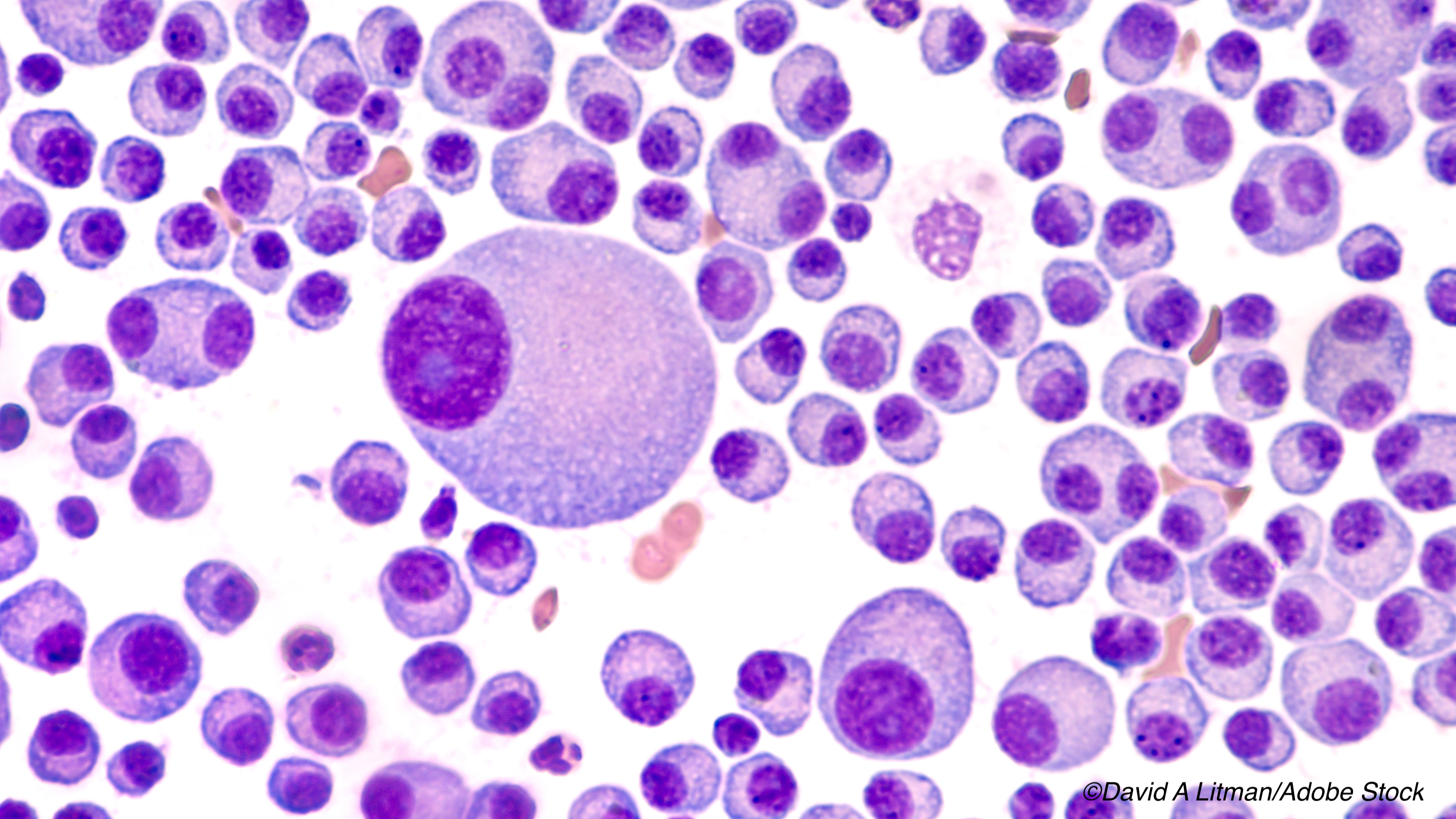Physicians treating multiple myeloma can expect to see an increase in patients over the next five years, researchers reported at the 2020 virtual meeting of the American Society of Hematology.
By the year 2025, the number of multiple myeloma cases will increase by about 13%, predicted Gena Kanas, PhD, an epidemiologist at Kantar Health, a worldwide organization that provides data, analytics, and research to the life sciences industry with a particular focus in oncology and rare diseases.
“While several factors can contribute to the increase of multiple myeloma incidences and treated patients projected into the future,” Kanas said in her virtual presentation, “one important factor is the underlying aging of the population, with older groups having higher incidence rates.”
Kanas and colleagues estimated future multiple myeloma populations by line of therapy—the first time such a projection has been performed, Kanas noted. In their analysis, Kanas and colleagues predicted the following:
- In 2020, there will be approximately 53,146 patients receiving first-line therapy for multiple myeloma; however, by 2025, that number would rise to 60,173 patients, according to the calculated projection. She noted that first-line treatments result in a mean progression-free survival of 21 months.
- Second-line therapy results in progression free survival of about 14 months, and about 19,407 patients with multiple myeloma will be receiving that therapy in 2020. In 2025, Kanas said that figure would rise to 21,928 people.
- In 2020, about 6,481 people with multiple myeloma will undergo third-line treatments, and by 2025 that will rise to 7,316 individuals. People receiving third-line therapies can expect a progression-free survival of about 9 months, Kanas reported.
- Roughly 1,649 people with multiple myeloma will be treated with fourth-line therapies in 2020, and by 2025 that will rise to 1,861 people. Patients with multiple myeloma being treated with fourth-line therapy should expect about 6 months of progression-free survival, she said.
- Kanas noted that fifth-line therapy also has a projected progression-free survival of 6 months. In 2020, an estimated 426 people will take fifth-line therapies — by 2025, Kanas and colleagues estimated that will increase to 481 people.
New cases of multiple myeloma are expected to increase from 32,415 in 2020 to 36,538 by 2025, and the prevalence of the disease will increase from 2020’s 144,922 cases to 162,399 by 2025, she said.
Kanas noted that the numbers of people on the five lines of treatment outlined in her report do not equal the number of people who are living with multiple myeloma — there are people who go untreated or who are treated on lines of therapy beyond the lines covered in her report. Patients who are not receiving systemic therapy or who are treated beyond these five lines of therapy in 2020 number an estimated 63,784 people, compared with the 81,138 people who are receiving 1-5 lines of therapy, she explained.
“More healthcare resources and more effective therapies for later line patients will be needed,” Kanas said. “While multiple myeloma is rarely curable, treatment for multiple myeloma has evolved over time, leading to improved survival duration for patients.”
More drugs to treat multiple myeloma are being developed, and they will be needed as patients cycle through lines of therapy. “Treatment options for multiple myeloma have grown a great deal in the last decade, and it’s evident that the newly approved drugs offer a longer survival to these patients,” said Wasif Saif, MD, deputy physician-in-chief and medical director at Northwell Health Cancer Institute, Lake Success, New York.
“It is important to understand that patients with relapsed or refractory multiple myeloma often develop resistance to standard treatments, underscoring the need for novel therapies with new mechanisms of action,” Saif told BreakingMED.
“Although survival of multiple myeloma patients has at least doubled during recent years,” he added, “most patients eventually relapse.” Hence, he noted, research continues to look for drugs that can be used in second-line, third-line, and so on.
“Agents under scrutiny now are aimed at other pathways, such as signal transduction modulators, kinesin spindle protein inhibitors, and inhibitors of NF-kB, MAPK, and AKT,” Saif explained.
Kanas and colleagues performed the retrospective, population-based, secondary data analysis of multiple myeloma in the United States by combining data from the Surveillance, Epidemiology, and End Results (SEER) registry and physician survey results from the CancerMPact database. Age- and gender-specific incidence rates were obtained from SEER for all available years through 2016 using hospital admission codes.
Based on the observed trend in the historical incidence rates through 2016, the incidence rates were projected to 2025, Kanas explained. These projected rates were multiplied by the respective age- and gender-specific population from the 2010 U.S. Census, moderate projection to calculate the estimated number of incident multiple myeloma patients between 2020–2025. Complete prevalence was calculated using the National Cancer Institute’s Complete Prevalence software.
To calculate the number of unique patients during a given year who were on a specific line of therapy, the mean progression-free survival of the line of therapy in months was calculated based on data from the 2018–2019 CancerMPact Treatment Architecture physician surveys. The total estimate of multiple myeloma patients on a line of therapy among prevalent patients was calculated using the annual estimate of patients initiating a line by year, divided by total months per year, then multiplied by the average progression-free survival in months for that line.
-
A retrospective, population-based, secondary analysis predicted that there will be a steady increase in multiple myeloma cases over the next five years.
-
This study combines data from both registry sources and physician surveys to report on contemporary proportions of treated multiple myeloma patients by line of therapy.
Edward Susman, Contributing Writer, BreakingMED™
Kanas is a consultant for Kantar Health.
Saif disclosed no relevant relationships with industry.
The study was sponsored by GlaxoSmithKline.
Cat ID: 331
Topic ID: 98,331,728,791,730,332,468,331


